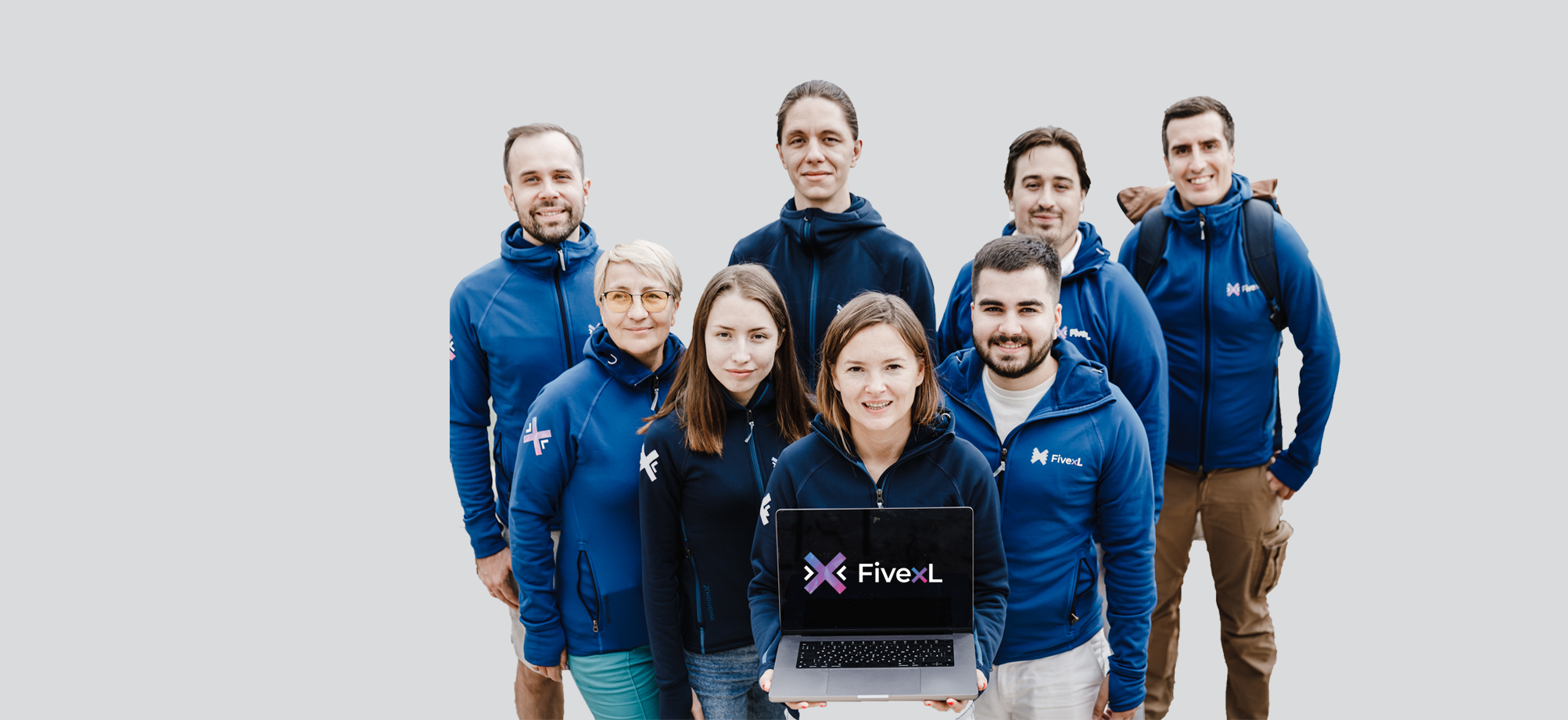As the Marketing Director at FivexL, my year-long experience has been a revealing journey into the world of remote work. Although it promises efficiency and work-life balance, remote work does present unique challenges. In this article, I will share the collective wisdom of our team and the strategies we’ve employed to foster a culture of productivity and satisfaction.
The Challenges of Remote Work
Working from home may seem like a dream come true, but it’s not without risks. Potential issues include productivity problems, difficulty separating work and personal life, a lack of team trust, decreased workflow visibility, and slower decision-making.
How does FivexL navigate these issues?
To answer this, I engaged my colleagues in candid discussions about their experiences and strategies in creating a productive remote work environment. Here’s what we’ve found:
- Effective Task Management
One of the biggest challenges of remote work is staying on track and maintaining productivity. At FivexL, we’ve found various ways to tackle this challenge. Artem Zhelezov, for example, uses a task board to keep track of all his work ideas. He uploads all his tasks to the board, dividing big tasks into smaller ones that take no more than a day to complete, and prioritizes all of them. He typically spends about two hours in the morning on his work, followed by team calls that last one to two hours. After the team calls, he focuses on working with clients, which usually takes up to six hours. To disconnect from work in the evening, Artem usually engages in physical activity such as walking with his dog, going to the pool, or cycling.
On the other hand, Ivan prefers weekly planning with regular adjustments. He divides his work into several stages: in the morning before lunch and in the evening. This allows him to stay organized and focused throughout the week, making sure that he meets his goals and deadlines.
As for me, I always make a plan for the week, as well as daily plans that include two mandatory large tasks and some smaller ones that I can do if I finish the main tasks quickly. I also make sure to leave some space in my schedule. This approach gives me flexibility in case of unexpected events or delays in completing a task. - Work-Life Balance
Maintaining a healthy work-life balance is crucial for remote workers. Andrey Devyatkin, for example, shared his experience of working from different apartments and coworking spaces while traveling: “While we travel, we lived in different sizes of apartments. I worked in the Canaries from coworking space for a couple of months. It actually does help you to have a better separation. When you leave, it works done, when come you focus on work, there are no distractions around you. But I think the best for me is when I have my own room in a place where I live so I don’t waste time, I can train in the middle of the day”.
Artem Zhelezov, on the other hand, has some life hacks to maintain a healthy work-life balance. He only uses Slack for work correspondence and disables Slack notifications on his phone during non-working hours to avoid distractions. He also makes sure that thoughts about work do not come into his head during non-working hours. To achieve this, he gives his best during business hours and avoids distractions such as social media. Artem notes the importance of informing customers about the progress made during the working day and the benefits it brings to their business. By doing so, customers can understand the amount of work and the results achieved. Therefore, ensuring customer satisfaction is crucial for having a peaceful rest after work hours. - Workspace Organization
Everyone has their own way of organizing their workspace. Alexey Eremin uses three profiles in Chrome for easy navigation, while Maria has converted a separate room into a small office for zero distractions.
Ivan also has a designated workspace setup with a laptop on an inclined stand, an additional monitor, and noise-canceling headphones. - Tackling Procrastination
Overcoming procrastination is a common challenge for remote workers. Vladimir Samoylov uses music to help him get into the focused mode and has a unique technique for overcoming inertia. He suggests that if you can’t start working, then repeat the process of closing the computer, leaving the office, taking a walk for about 5 minutes, and coming back.
Alexey takes a different approach. He pulls away from what he’s working on and asks himself whether he enjoys the task, what problem he’s solving, and whether it’s a priority. He also keeps a working and personal journal to structure his thoughts while making.
For me, having a daily plan that aligns with long-term goals and using the Pomodoro technique to manage work are effective ways to tackle procrastination.

Building and Nurturing Remote Teams at FivexL
Creating a positive remote working culture is about more than just individual strategies - it’s about building and nurturing a strong remote team. The key to our success in creating an effective remote team lies in the similarities in our team members’ answers. Despite the geographical distances, our team shares common values, goals, and interaction styles. This is not by chance but the result of careful planning and execution.
- Hiring the Right People
Andrey Devyatkin, the co-founder at FivexL, believes it starts with hiring people who are motivated to work, develop, and grow. “You hire with these types of attributes. And then you don’t have a problem organizing a team’s productivity.” - Promoting Equality and Diversity
FivexL values diversity, collaboration, and tolerance, ensuring that everyone’s opinion is valuable, regardless of their experience and tenure. - Embracing Transparency
Transparency is also highly valued as a critical strength. As Andrey pointed out, being transparent about everything that’s going on and resolving conflicts as soon as they arise is essential to maintaining a healthy and productive work environment. - Effective Communication
Our success also bases on strong communication. We have several productive short face-to-face meetings in a week, it establishes trust and builds a relationship. We use tools like Slack and Google Workspace for planning, meetings, and collaborative work. GitHub helps us track project progress, and sometimes we use Figma for collaborative work on a design. Regular check-ins and daily status updates help maintain clarity and transparency. - Engaging the Team
Ensuring everyone is heard and aligned with the company’s direction is crucial. We communicate our vision and goals clearly. We have a team agreement that we review whenever a new team member joins us. We also organize strategic sessions where we share our professional and personal short-term and long-term plans. This helps us understand each other’s perspectives and ensures that all team members feel heard.
It’s important to note that different strategies may work for different groups of people, and experimentation is key. While synchronization may not be necessary every day in a physical setting, tools like Slack enable effective asynchronous communication, which can help maintain alignment. Nonetheless, we always prioritize maintaining alignment as a top priority. - Technology
That’s all around AWS, allowing us to connect anywhere in the world. That’s why it enables us to work remotely. People who work with private data-center don’t have this type of flexibility.
Freedom and Flexibility
While remote work s no easy feat with the right strategies and mindsets, it’s more than possible. It is worth doing this for the main advantages of working in this mode. Andrey Devyatkin appreciates the freedom remote work brings, especially in choosing where to live and spending more time with loved ones. He noted, “You see your children grow, and you are at home. We have a really good time traveling and exploring.”
Similarly, Vladimir Samoylov highlighted the flexibility of working from home, saying, “I spend more time with my family: I have lunch with my wife every day. I can wear any clothes, play VR or ride a bike during breaks.”
To sum up, building a positive remote working culture requires effort and dedication, but it’s achievable with the right strategies and attitudes. At FivexL, we have all played a part in creating and maintaining this culture, which values mutual respect, personal growth, and company success.
We hope our experience can provide useful insights to other organizations seeking to develop their remote work culture.


